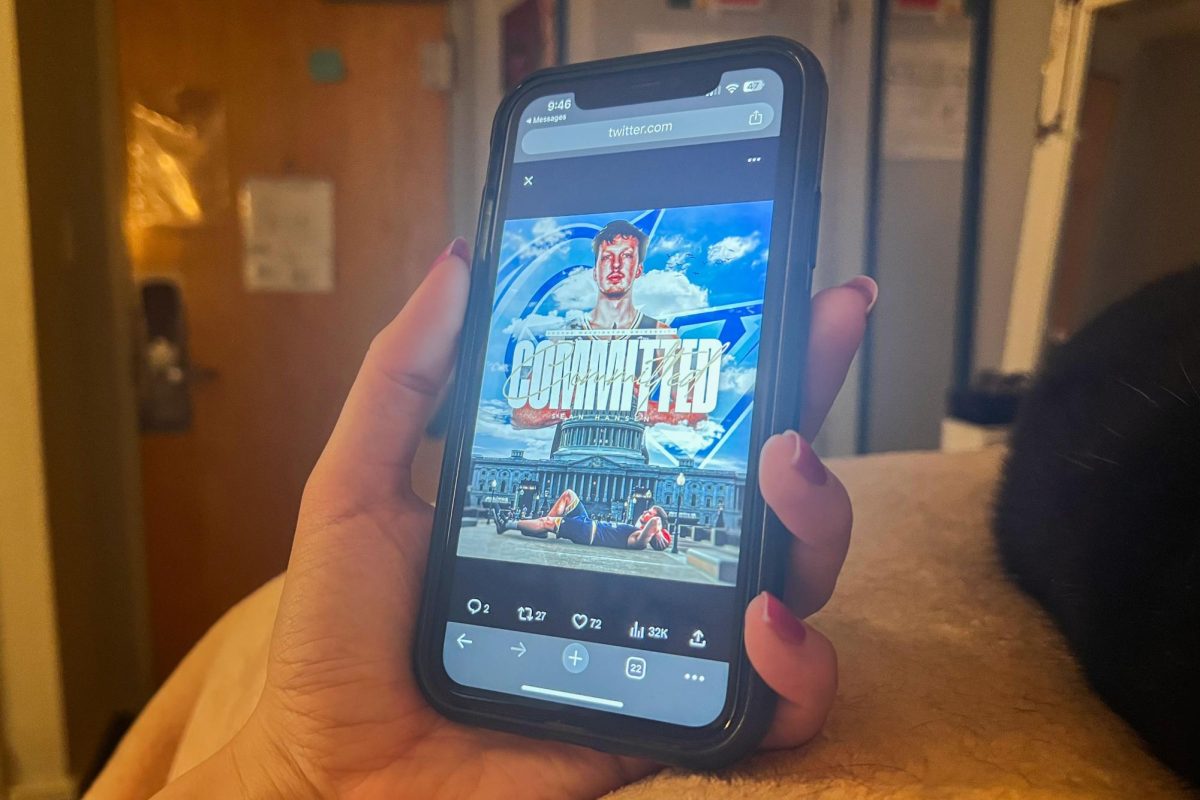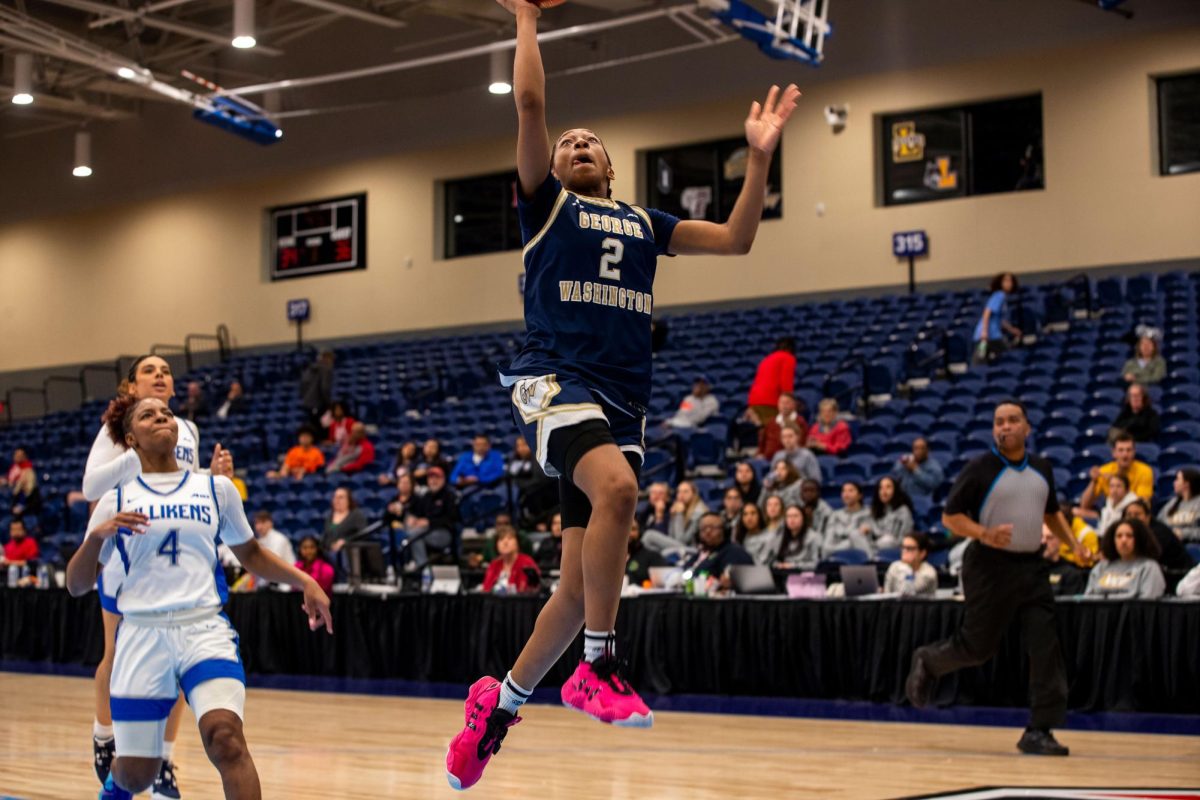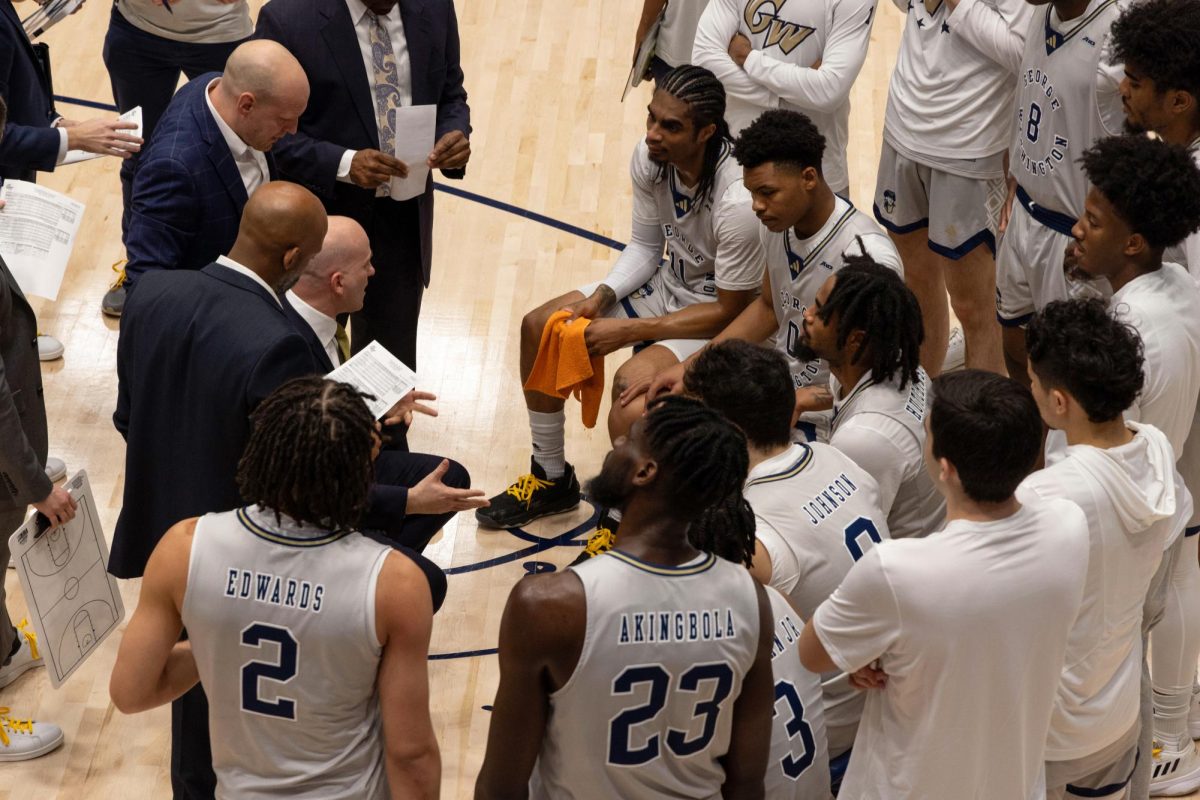
GW’s water polo team beat 17th-ranked Santa Clara last week at the Princeton Invitational, a milestone victory for a program showing real signs of becoming a contender on the East Coast. The tournament was held in Princeton’s 1,700-seat DeNunzio Pool, a far cry from Smith Center’s substandard pool, where GW plays its home games even though it is eight meters shorter and shallower than most NCAA pools.
There are no regulation dimensions for water polo pools according to FINA, the international governing body for aquatic sports, but most NCAA pools are 30 by 20 meters and sufficiently deep to prevent standing. The pool under in Smith Center is only 25 yards, or 22.86 meters, across and only 4.5-feet deep in the shallow end.
The pool presents a slew of problems for the 5-4 Colonials. According to FINA, regulation pools must maintain a depth of at least six feet across the entire area of play, with exceptions being occasionally granted to high schools “when such facilities are not available.” If players use the floor in order to gain an advantage, the ball is turned over.
Recruiting top players is difficult because recruits are put off by the lackluster facilities, forcing GW head coach Scott Reed do more work to convince players to come.
“I really liked Coach (Reed), the University and the guys on the team, but the pool turned me off a little bit,” freshman utility player Peter Thomas said. “It was a lot smaller than the pools I’d played in during high school.”
Thomas, who said he visited many other universities during his college search before ultimately selecting GW, said he was impressed with the pool at Navy and believes the pool is a large draw for prospective players.
“I was taken aback at Navy,” Thomas said. “I had never seen so many seats in a pool area. The crowd capacity in there really gets you interested – it’s a sign of a really good program.”
As is also the case with GW’s men’s basketball team and gym upstairs, the pool’s size and lack of seating can prevent Reed from hosting large tournaments with nationally ranked opponents that would help bolster the program’s prestige and national recognition.
“It’s definitely harder to schedule games and tournaments when you have a restrictive facility,” Reed said.
Thomas said that the more he swims in the pool, the more aware he becomes of how outdated it is.
“You begin to notice the rough textures on the floor and become accustomed to mechanical failures that totally change the game,” he said.
Two separate incidents this preseason prevented the team from holding its daily practice. In one case, the water level dropped two feet, making an already shallow pool too shallow to play in. Later, the water temperature in the pool also dropped significantly.
Despite some upgrades to the upper floors of Smith Center, where the profitable men’s and women’s basketball teams play, the musky catacombs that house Reed’s water polo program have received little attention since it was first constructed in 1975.
“They do some annual maintenance, but not much more than that – just repainting and that sort of thing,” Reed said.
Jack Kvancz, director of athletics, said the University is dedicated to providing the best possible facilities to all of its sports teams, and that includes water polo.
“Facilities are absolutely important and we are completely committed,” he said.
Kvancz said there is currently a proposal being circulated among private donors to completely revamp the lower levels of Smith Center. He would not disclose any specific figures, but Kvancz said that the total project would cost between $25 to $40 million and would need “outside, individual funding” for it to be realized.
“We are totally involved in trying to raise the money,” Kvancz said. “This could take 10 years, but we are at bat. I don’t know if we are going to hit a single or a home run, but at least we are at bat.”
For Reed and his team, he can only hope that someone steps up to the plate and knocks one out.
“If the money were there it would definitely help. This is a team that should compete regularly for the conference title and, in five years time, maybe even a Final Four berth. If we had $20 million for a new facility, it would make that even easier.”
“Right now we are just hoping for a full deep pool,” he said.







